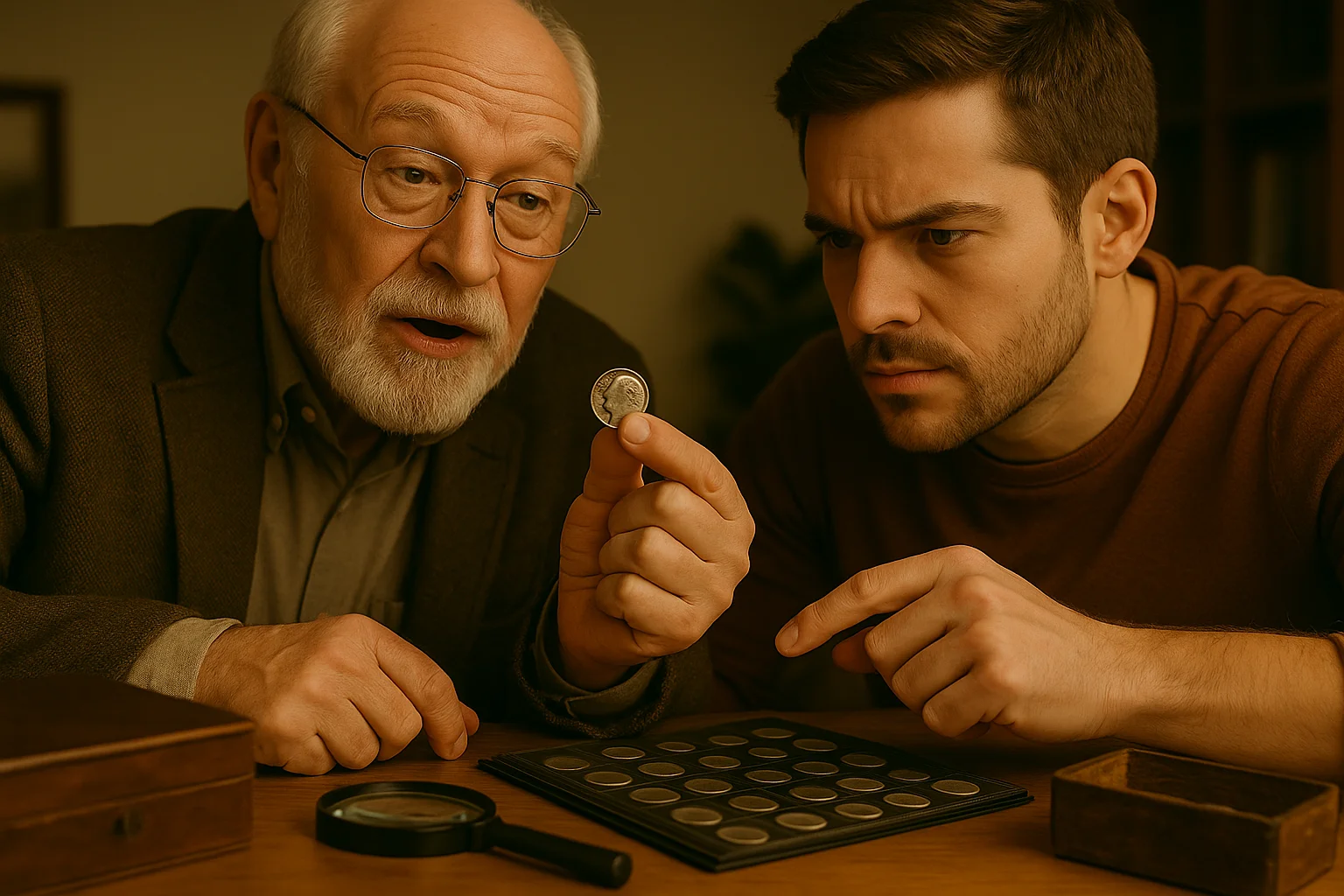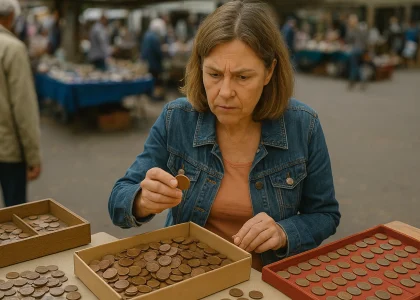Most people don’t think twice about a worn dime rattling around in the bottom of a change jar. But if that dime is from 1947, it might be time to take a closer look. While many Roosevelt dimes are still common in circulation, some specific coins from that post-war year can be worth far more than ten cents – and that includes some surprises even experienced collectors sometimes overlook. If you’ve ever wondered about the real 1947 dime value, you’re not alone – and the answer depends on several very specific factors.
Now, we will walk you through five key signs that your 1947 dime might be worth more than face value. But before jumping into those traits, firstly we need to explore why this coin still matters in the collecting world, and what characteristics make it stand out from other pocket change.
Why the 1947 Roosevelt Dime Still Matters
In the wake of World War II, the U.S. Mint resumed full-scale production of circulating coinage – including the Roosevelt dime (which had only debuted the year before in 1946). The design, created by John R. Sinnock, was a tribute to President Franklin D. Roosevelt, whose legacy was closely tied to the March of Dimes campaign against polio. It features Roosevelt’s left-facing portrait on the obverse, and a torch flanked by olive and oak branches on the reverse — symbolizing liberty, peace, and strength.
Three mints produced dimes in 1947:
- Philadelphia (no mint mark)
- Denver (D)
- San Francisco (S)
All coins were struck using the same 90% silver, 10% copper alloy that was standard since the early 20th century. Even in circulated condition, that silver content gives each dime a minimum melt value – usually around $1.80 to $2.00 depending on current silver prices. In best condition, or with certain rare traits, values can rise exponentially.
In the table below you can see a breakdown of the 1947 Roosevelt dime’s basic characteristics:
| Feature | Details |
| Year | 1947 |
| Metal Composition | 90% Silver, 10% Copper |
| Weight | 2.5 grams |
| Diameter | 17.91 mm |
| Edge | Reeded |
| Obverse | Franklin D. Roosevelt profile |
| Reverse | Torch with olive and oak branches |
| Mint Marks | P (none), D (Denver), S (San Francisco) |
While 1947 dimes aren’t rare in the general sense (millions were minted) they can be quite valuable in the right condition or when featuring specific mint errors. That’s what we will discuss next: five ways to tell if your coin deserves a second (or third) glance.

Five Signs Your 1947 Dime Might Be Worth More Than You Think
Once you’ve confirmed that you’re holding a genuine 1947 Roosevelt dime, the next step is to identify if it is worth keeping – or even sending off for professional grading. Here are some most important signs that your coin could be worth significantly more than its melt value.
- Mint Mark Location and Type
One of the first things to check on your 1947 dime is the mint mark – a tiny but powerful indicator of origin and, potentially, value. For dimes from this year, the mint mark is found on the reverse side of the coin, positioned just to the left of the torch’s base (it is nestled between the olive branch and torch handle).
Three mints were involved in production:
- Philadelphia (no mark) – the largest mintage.
- Denver (D) – smaller mintage.
- San Francisco (S) – even lower quantities, especially desirable in high grade.
Thus, coins with the “D” or “S” mint mark tend to be more valuable in top condition, especially if they feature sharp details and luster. A 1947-S dime in MS65 with Full Bands can bring $40–$60, while a comparable Philadelphia coin might fetch slightly less. Still, even Philadelphia dimes without a mint mark can be quite valuable when found in premium condition.
Collectors often seek out lower-mintage marks for rarity, but don’t overlook conditions – that is where real value lies.
- Coin’s Condition and Grade
A coin’s condition can dramatically influence its worth, and that is especially true for the 1947 dime. While all of them contain 90% silver, a coin’s grade can mean the difference between $2 melt value and $100+ collector value.
Here is a quick breakdown of typical grades and what they mean:
- Very Fine (VF): Moderate wear, with most features still visible.
- About Uncirculated (AU): Light traces of friction on high points, solid details.
- Mint State (MS60–MS67): No signs of wear; preserved or never circulated.
Another factor is the Full Bands (FB) designation. It refers to the torch on the reverse – if the horizontal bands are fully defined and separated, the coin earns this bonus label. It is not just cosmetic or visual – FB coins are far rarer and often fetch 2–3× more than non-FB coins in the same grade.
Tip: Don’t trust your eyes alone. Use the Coin ID Scanner app – simply take a photo, and it will help you determine grade, mint mark, and even detect high-value features like Full Bands or strike anomalies. For novice collectors, the app can become a game-changer tool.
- Silver Content
A major reason any 1947 dime holds value is its composition. All dimes from that year contain 90% silver and 10% copper, which gives them intrinsic worth – even in poor condition.
At current market rates, the melt value of a 1947 dime is typically $1.80 to $2.30, based on the price of silver. So even a scratched or worn coin has more than face value simply because of its metal.
While collectors often seek condition and rarity, silver alone keeps the floor value higher than a standard coin. That makes even common 1947 dimes worth saving (especially when silver prices rise).
Fact: A genuine silver dime weighs about 2.5 grams. If yours feels light, it may be overly worn or not authentic — a quick weight check can save you time.
- Mint Errors That Boost Value
Sometimes, the U.S. Mint gets it wrong – and collectors love it when that happens. A small number of 1947 Roosevelt dimes left the mint with striking errors that now command impressive prices. These mistakes were typically caused by mechanical failures or die wear during production, but they add both rarity and collector appeal.
Here are several real mint errors confirmed by collectors and auction records:
| Error Type | Description | Estimated Value |
| Repunched Mint Mark (RPM) | A second impression of the mint mark, slightly offset | $20 – $80 (XF–MS) |
| Die Crack | Raised lines or fractures caused by a worn die | $15 – $60 (VF–MS) |
| Off-Center Strike | Design visibly misaligned from center | $30 – $150 (10–40% off) |
| Clipped Planchet | A curved section missing from the coin’s edge | $25 – $90 (depending on size) |
| Double Die Reverse | Slight doubling on letters or torch details | $50 – $200+ (MS grades) |
While rare, these errors can still be found even in coin rolls. Condition still matters, but even low-grade examples with errors can be worth multiple times face value.
Advice: If something looks “off” – a shifted design, repeated letter, or strange curve – research before dismissing it, as it could be more than just damage.
- Provenance and Packaging Matter
How your coin was stored before it reached you can affect both value and grade. Coins that spent decades in original U.S. Mint sets, sealed bank rolls, or even estate collections often remain in much better condition.
Many high-grade 1947 dimes – especially those with full bands – have come from untouched rolls or collector albums. If you find one in clean condition and still inside vintage packaging, there is a strong chance it has premium value.
Buying coins with known provenance also increases buyer confidence in the market. Collectors often pay more for coins with a traceable history or stored in ideal conditions.

From Pocket Change to Jewel: Know What You Hold
Not every 1947 dime is rare, but some certainly are. Knowing how to spot key details (from mint marks to strike errors) is what separates casual finders from confident collectors. Whether your dime turns out to be worth $2 or $200, the real reward is discovering something others overlooked. In coin collecting, knowledge is value, and now you have both.




